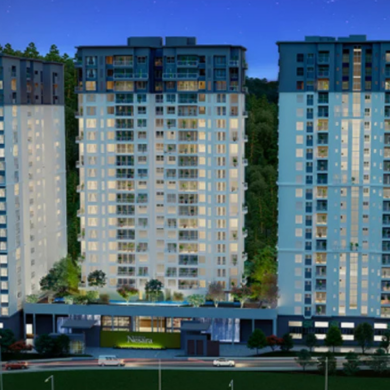
Millennials are redefining how homes are bought, sold, and lived in. Millennials approach have an innovative take on home buying, valuing sustainability, technology integration, and flexible spaces. Emphasis on community, remote work options, and eco-friendly features shape their future-focused approach.
Gone are the days of traditional house hunting, with endless drives through neighbourhoods and poring over paper listings. The millennial home buyer is armed with information at their fingertips, utilising cutting-edge technology and innovative platforms to streamline their homebuying journey. From virtual tours and augmented reality applications to advanced data analytics, millennials leverage every tool available to make informed decisions and find the perfect home that aligns with their lifestyle.
For this generation, homeownership extends beyond four walls and a roof; it encompasses a desire for sustainable living, community engagement, and a reflection of personal values. Furthermore, the financial landscape has changed dramatically for millennials, who entered the housing market during economic uncertainty and student loan burdens.
As a result, this generation is approaching homebuying with a more pragmatic and financially conscious mindset. From alternative financing options to co-ownership models, millennials are exploring creative solutions that cater to their unique economic circumstances.
Table of Contents
Millennial Approach: Financial Preparedness
Millennials face distinctive financial challenges, including student loan debt, job market dynamics, and housing affordability issues. Many adopt technology and FinTech tools to manage their finances efficiently. Financial literacy is pivotal in empowering millennials to make informed budgeting, investing, and debt management decisions.
With the gig economy and dynamic job market, understanding financial products, navigating debt responsibly, and planning for long-term goals are crucial aspects of financial preparedness. To achieve financial stability, millennials should prioritise building an emergency fund, creating & adhering to a budget, and embracing a long-term investment perspective.
Diversification across various asset classes, contributing to retirement accounts, and continuous learning about financial markets are critical strategies for successful financial management. By addressing these challenges and incorporating sound financial practices, millennials can enhance their financial literacy and develop a resilient foundation for long-term economic well-being.
Millennial Approach: Changing Priorities in Home Features
The evolving landscape of work and lifestyle preferences has led to changing priorities for in-home features. With the rise of remote work, there is a growing demand for flexible workspaces within homes. Design considerations now emphasise the need for dedicated areas that cater to the demands of remote work, fostering productivity and work-life balance.
Sustainability and eco-friendly features have become paramount in contemporary home design. Homebuyers and homeowners increasingly value energy-efficient appliances, green building materials, and eco-conscious construction practices. Integrating solar panels, smart thermostats, and water-saving technologies reflects a broader commitment to reducing environmental impact – aligning with the global emphasis on sustainable living.
Millennial Approach: Urban vs. Suburban Living
Urban and suburban living represent two distinct lifestyle choices, each with distinct advantages and challenges. The decision between the two often depends on personal preferences, priorities, and individual circumstances.
Urban Living
Urban areas are characterised by high population density, diverse cultural offerings, and convenient access to amenities. Living in a city means being closer to workplaces, entertainment venues, restaurants, and public transport. The urban lifestyle is often fast paced, with many job opportunities and a vibrant social scene. However, it can also come with higher living costs, increased noise levels, and limited green spaces.
Sub-urban Living
Suburban living is associated with quieter neighbourhoods, larger homes, and green spaces. Suburbs are often characterised by lower population density and slower pace of life compared to urban areas. Families often choose this option for its perceived safety, good schools, and community. The flipside of suburban living is longer commutes to urban centres for work or entertainment, and limited access to public transport.
4 Factors Influencing Urban v/s Suburban Living
-
Lifestyle Preferences:
Urban dwellers may value the convenience and excitement of city life, while suburban residents may prioritise a quieter and more family-oriented environment.
-
Commute:
Proximity to workplaces and ease of commuting can be crucial. Urban living means shorter commutes, while suburban living may involve longer commutes but with less traffic congestion.
-
Cost of Living:
Urban areas have a higher cost of living, including housing costs, while suburban areas offer more affordable housing options.
-
Family Considerations:
Suburban living often appeals to families due to larger homes, good schools, and a perceived sense of safety. Singles or young professionals may prefer the cultural amenities and job opportunities in urban areas.
Millennial Approach: Technology and Digitalisation
Incorporating technology in the home search process has brought about a fundamental shift in millennials’ approach to home buying. Real estate websites and online platforms play a pivotal role – offering detailed property information, high-resolution images, and customisable search filters to streamline the initial stages of the home search.
Facilitated by advanced technologies like 3D modelling and augmented reality, virtual tours provide prospective buyers & renters with immersive, remote property exploration experiences – minimising physical visits until stronger interest is established. This saves time and accommodates individuals who may be geographically distant, making the home search process more accessible & efficient.
Moreover, digitising transactions has significantly simplified the often paperwork-heavy process of buying or renting a property. Electronic signatures (e-signatures) enable secure and efficient signing of contracts & documents, reducing the reliance on physical paperwork. Integrating online payment systems further contributes to digitising real estate transactions, offering a streamlined and secure way to handle financial aspects.
Millennial Approach: Community and Social Factors
In contemporary living preferences, there is a noticeable shift towards emphasising community and social connections as integral components of residential experiences. Beyond the physical attributes of a home, individuals now prioritise neighbourhoods that foster a keen sense of community and offer opportunities for meaningful social interactions.
Neighbourhood selection is no longer based solely on proximity to amenities. Instead, homebuyers & renters seek vibrant communities with diverse cultural offerings, communal spaces, and social engagement initiatives. This growing emphasis has given rise to notable communal living trends in millennial communities, including co-living and collaborative living arrangements.
Characterised by shared common areas and organised social events, co-living spaces are designed to cultivate a sense of camaraderie among residents. Communal living trends involve intentional communities where individuals choose to live together, sharing responsibilities and resources.
Millennial Approach: Homeownership vs. Renting
The attitudes of millennials toward homeownership have undergone a notable shift, with many displaying a preference for renting over buying. Factors contributing to this trend are economic challenges, substantial student loan debt, and a desire for flexibility in career, lifestyle, & location choices. Millennials often prioritise experiences and mobility, leading them to prefer renting – as it aligns with their current life and financial circumstances.
High cost of homeownership in urban areas and the perceived burden of long-term financial commitments have led many millennials to reevaluate traditional notions of success tied to owning a home. A complex interplay of factors – including affordability, job stability, and lifestyle preferences – influences the decision to rent or buy. Affordability considerations affect down payments, mortgage rates, and ongoing maintenance costs. Job mobility and the likelihood of relocation often favour renting, due to its inherent flexibility.
Long-term investment considerations are pivotal, as homeownership is traditionally viewed as building equity. However, millennials may approach this decision more cautiously, weighing the benefits of real estate investment against alternative investment opportunities such as the stock market. The choice between renting and buying is a nuanced decision shaped by individual circumstances, financial goals, and evolving societal attitudes.
Millennial Approach: Importance of Online Reviews and Recommendations
Millennials prioritise online reviews & testimonials as essential sources of information when navigating the real estate landscape. Whether seeking a new home or evaluating real estate professionals, millennials turn to online platforms to gain insights from the experiences of their peers.
The transparency of these reviews helps in informed decision-making – enabling millennials to assess the credibility and reputation of real estate agents, property managers, and available housing options. Collective wisdom shared online becomes a valuable guide, shaping millennials’ choices and influencing their interactions within the dynamic and competitive real estate market.
Social media’s influence is a dominant factor in the decision-making process for millennials in real estate. Platforms like Instagram, Facebook, and Twitter serve as visual showcases for properties and as dynamic spaces where individuals share experiences, recommendations, and relevant market information.
Millennials engage with real estate content on social media for virtual property tours & market updates, and to connect with professionals. These platforms provide a comprehensive and interactive experience – contributing significantly to how millennials explore, evaluate, and decide on real estate transactions. Trust is paramount in their engagement with online real estate platforms – necessitating accuracy, transparency, and user-friendly interfaces to align with the preferences & expectations of this tech-savvy demographic.
Millennial Approach: Impact of COVID-19 on Homebuying Trends
The COVID-19 pandemic caused significant shifts in homebuying trends for millennials, primarily driven by the widespread adoption of remote work and changing preferences in the concept of home. Millennials are increasingly seeking residences that align with the flexibility of remote work, prompting relocations from urban centres to suburban or rural areas. The emphasis is on larger, more affordable homes that provide functional workspaces and opportunities for recreational activities.
Additionally, accelerating digital adoption in the real estate industry has played a pivotal role in facilitating these shifts. Millennials readily embrace virtual property tours, online transactions, and digital communication tools – marking a lasting change in how they approach and engage with the real estate market. The intersection of remote work, evolving home preferences, and increased reliance on digital platforms is shaping a new era in homebuying trends for this tech-savvy generation.
Millennial-Friendly Financing Options
Millennials are exploring alternative financing options that diverge from traditional mortgage structures, aligning with their unique financial challenges and preferences. Shared equity financing and lease-to-own arrangements offer flexible pathways to homeownership, allowing millennials to partner with investors or companies to share both initial purchase costs and potential future property appreciation or depreciation.
Lease-to-own models provide the flexibility to rent with the option to buy later, reducing the immediate financial burden of a substantial down payment. These alternative financing models cater to millennials’ desire for creative solutions in navigating the complexities of real estate financing, while providing more adaptable & collaborative approaches to homeownership.
Co-buying and shared ownership trends further address millennials’ financial constraints by enabling individuals to pool resources with friends or family members, spreading the costs & responsibilities associated with homeownership. This collaborative approach makes homeownership more attainable and fosters a sense of community & mutual support. Crowdfunding platforms and other innovative financing solutions have also gained traction, allowing millennials to invest small amounts collectively in real estate projects.
Read More: Benefits of First-Time Home Buyer!
Final Thoughts
Millennials are reshaping the homebuying landscape through distinct preferences. Factors such as remote work, a desire for flexible living arrangements, and a shift toward community-centric values have led millennials to reconsider traditional notions of homeownership. Emphasis on online reviews, virtual tours, and innovative financing models reflects a tech-savvy approach to navigating the real estate market.
The COVID-19 pandemic and its aftermath have accelerated these trends, prompting a re-evaluation of the role of the home as a multifunctional space, and encouraging millennials to explore alternative financing options. As the real estate industry evolves, professionals & stakeholders must adapt to millennial needs. This includes embracing digital technologies, providing transparent & trustworthy online platforms, and developing innovative financing solutions catering to this demographic’s changing preferences.
The real estate industry is responsive to the dynamic nature of millennials’ lifestyles & values – enhancing their homebuying experience and contributing to the overall vitality & sustainability of the real estate market. By recognising and adapting to millennials’ evolving trends & preferences, the industry is fostering a more inclusive and forward-thinking approach that aligns with the needs of this influential demographic.
FAQs:
1. What do millennials look for when buying a home?
When buying a home, millennials look for affordability, flexibility, and community. They value locations near workplaces, amenities, and public transport. Energy-efficient features, modern technologies, and flexible living spaces that accommodate remote work are also significant considerations. Millennials seek homes that align with their values, such as sustainability, and rely on online reviews, virtual tours, and social media for research and decision-making.
2. Which generation owns the most homes?
The Baby Boomer generation typically owns the most homes. Born between 1946 and 1964, this generation had more time to accumulate wealth, and many entered the housing market during periods of economic growth. However, this is subject to change as younger generations, particularly millennials, continue to enter the real estate market over time.
3. Who is the largest group of home buyers?
The largest group of home buyers is Baby Boomers. This generation has been historically dominant in homeownership, and it still makes up a sizable portion of home buyers, especially in certain regions. However, the largest group of home buyers varies depending on the timeframe considered. In recent years, millennials have emerged as a significant force in the real estate market, representing a substantial portion of home buyers.
4. What are millennials' buying behaviour?
Millennials’ buying behaviour is unique, and it is influenced by financial constraints, lifestyle preferences, and technological integration. They often prioritise experiences over possessions, leading to a selection of diverse & vibrant communities. Millennials are also known for their reliance on technology – using online platforms, social media, and mobile apps for property research, virtual tours, and reviews. Flexible living arrangements, including co-buying and shared ownership models, are gaining traction as millennials seek more adaptable homeownership solutions.
5. Why are millennials living at home?
Millennials are living at home due to several factors, including economic challenges, student loan debt, and high cost of living. The financial burden of purchasing a home, job market dynamics, and the pursuit of advanced education have led many millennials to delay homeownership and live with their parents. Additionally, cultural shifts, changing attitudes toward marriage & family, and the desire for financial stability before committing to homeownership contribute to this trend. The COVID-19 pandemic & its aftermath, which prompted remote work and altered living preferences, has also influenced millennials' decisions.









